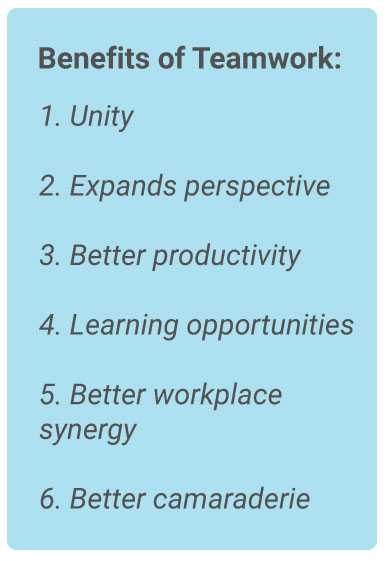What Are The Most Common Filler Words?
Are you tired of listening to conversations that are filled with unnecessary words? Have you ever wondered why some people seem to use certain words excessively? Well, look no further! In this article, we will delve into the fascinating realm of filler words, exploring the most common ones that tend to creep into our everyday speech. From “um” and “uh” to “like” and “you know,” we will uncover the reasons behind their usage and how they impact our communication. So, sit back, relax, and get ready to discover the secrets behind the most common filler words!
Have you ever found yourself using certain words or phrases without even realizing it? If so, you’re not alone! Filler words have become a common aspect of modern communication, often used to bridge pauses or convey uncertainty. In this article, we will explore the world of filler words, shedding light on why we rely on them and how they affect our language. From “so” and “well” to “basically” and “actually,” we will uncover the most prevalent filler words and their impact on our conversations. Get ready to dive into the intriguing realm of filler words and uncover the secrets behind their usage!
What are the most common filler words?
Filler words are words or phrases that are used to fill pauses or gaps in speech. They are often used unconsciously and can serve various purposes in conversation, such as buying time to think, expressing hesitation, or signaling politeness. Here are some of the most common filler words:
1. Um/uh: These are perhaps the most frequently used filler words. They are used to signal hesitation or uncertainty while speaking. For example, “Um, I’m not sure if I can make it to the meeting.”
2. Like: This word is commonly used as a filler to add emphasis or to create a pause in speech. It is often used by younger generations and can be seen as a way to express informality. For example, “So, like, I was walking down the street, and, like, this guy comes up to me.”
3. You know: This phrase is used to seek agreement or understanding from the listener. It is often used when the speaker assumes that the listener shares the same knowledge or experience. For example, “The weather is so unpredictable, you know?”
4. Well: This word is used as a filler to bridge a gap in conversation or to signal a change in topic. It is often used to buy time to think before responding. For example, “Well, I’m not sure what to say about that.”
5. So: This word is commonly used as a filler to start a sentence or to introduce a new topic. It is often used to create a smooth transition in speech. For example, “So, let’s talk about the upcoming project.”
6. Actually: This word is used as a filler to emphasize a point or to provide additional information. It is often used to make a statement more convincing or authoritative. For example, “Actually, I have a lot of experience in this field.”
7. Basically: This word is used as a filler to simplify or summarize a complex idea or concept. It is often used to make information more accessible or understandable. For example, “So, basically, what I’m trying to say is…”.
8. Well, you see: This phrase is used as a filler to provide an explanation or to justify a statement. It is often used to add credibility or to make a point more persuasive. For example, “Well, you see, the reason why I’m late is because of traffic.”
9. I mean: This phrase is used as a filler to clarify or rephrase a previous statement. It is often used to ensure that the listener understands the intended meaning. For example, “I mean, it’s not that difficult to understand.”
10. Right: This word is used as a filler to seek confirmation or agreement from the listener. It is often used to invite the listener’s participation in the conversation. For example, “We should definitely have a team meeting, right?”
11. Actually, you know: This phrase is used as a filler to add emphasis or to provide additional information. It is often used to make a statement more convincing or authoritative. For example, “Actually, you know, I’ve been studying this topic for years.”
12. In a way: This phrase is used as a filler to express a nuanced or subjective perspective. It is often used to add complexity or depth to a statement. For example, “In a way, I can understand why she made that decision.”
13. I guess: This phrase is used as a filler to indicate uncertainty or lack of confidence in a statement. It is often used when the speaker is not entirely sure about something. For example, “I guess we’ll have to wait and see.”
14. Honestly: This word is used as a filler to express sincerity or authenticity in a statement. It is often used to emphasize that the speaker is speaking truthfully or from the heart. For example, “Honestly, I think it’s the best option.”
15. Anyway: This word is used as a filler to transition to a new topic or to wrap up a conversation. It is often used to indicate that the speaker is moving on from a previous point. For example, “Anyway, let’s get back to discussing the main issue.”
16. Well, I suppose: This phrase is used as a filler to express a tentative or cautious opinion. It is often used when the speaker is not entirely confident about their statement. For example, “Well, I suppose it could be a possibility.”
17. To be honest: This phrase is used as a filler to emphasize that the speaker’s following statement is their true opinion or belief. It is often used to create a sense of authenticity or openness. For example, “To be honest, I wasn’t expecting such a positive response.”
18. Like I said: This phrase is used as a filler to remind the listener of a previous statement or to reiterate a point. It is often used when the speaker wants to emphasize their previous statement. For example, “Like I said earlier, we need to prioritize our tasks.”
19. I think: This phrase is used as a filler to express personal opinion or uncertainty. It is often used to indicate that the following statement is the speaker’s perspective. For example, “I think we should consider other options.”
20. Well, actually: This phrase is used as a filler to provide additional information or to correct a previous statement. It is often used to clarify or expand on a point. For example, “Well, actually, there’s more to the story than what I initially mentioned.”
Speak English naturally by using filler phrases
In conclusion, filler words are a common part of everyday speech and can be found in various languages, including English. Despite their prevalence, it is important to be aware of their usage and strive to minimize them in order to communicate more effectively. By identifying and understanding the most common filler words, such as “um,” “like,” and “you know,” individuals can work towards improving their speaking skills and conveying their thoughts more clearly.
When it comes to filler words, “um” is perhaps one of the most frequently used. This word often slips into conversations when we need a moment to gather our thoughts or transition between ideas. Similarly, the word “like” tends to find its way into sentences as a way to add emphasis or create a pause. While these words may seem harmless, they can make our speech sound less confident and less professional. By recognizing these habits and consciously reducing their usage, we can improve our communication skills and become more effective speakers.
Another common filler word that often sneaks into conversations is “you know.” This phrase is often used as a way to seek validation or agreement from the listener. While it is natural to want to connect with others and ensure that they are following our train of thought, relying too heavily on this phrase can detract from the clarity and impact of our message. By being mindful of our use of “you know,” we can work towards more concise and confident communication.
In conclusion, filler words may be common in everyday speech, but they can hinder effective communication. By identifying and minimizing the usage of filler words such as “um,” “like,” and “you know,” individuals can become more confident and articulate speakers. By striving to communicate more clearly and concisely, we can ensure that our message is heard and understood by others.



